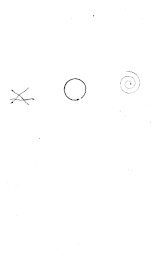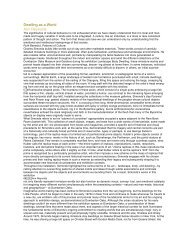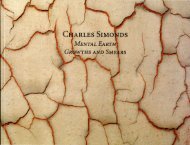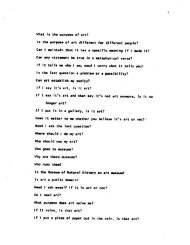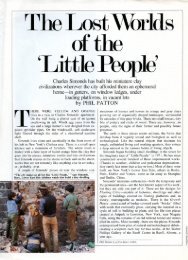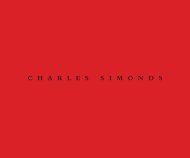Read Catalog - Charles Simonds
Read Catalog - Charles Simonds
Read Catalog - Charles Simonds
You also want an ePaper? Increase the reach of your titles
YUMPU automatically turns print PDFs into web optimized ePapers that Google loves.
lous details suggest that his vision is authentic-but he does not specify when<br />
and where. He insists upon, if not free, then unencumbered associations,<br />
studiously avoiding analogies with the Roman Empire, for one, whose infamous<br />
decline has been so often cited as to preclude the imaginary reconstructions<br />
his sculptures really demand. He leaves to others the weary cliches<br />
of catastrophe-the broken Corinthian columns, Ozymandian hulks, and<br />
Rivers of Blood.<br />
But certain of his earlier structures, particularly those of the Linear, Circle,<br />
and Spiral Peoples (pls. r2-r4) do attain something of the nature of archetypes<br />
themselves despite their stnall size. It is clear that these three buildings are<br />
direct communal and systematic expressions of belief, like medieval cathedrals.25<br />
In this important respect these tiny buildings can be compared to the<br />
great archetypal monuments such as the Pyramids, or particularly, the Tower<br />
of Babel (fig. r), which is also a construct of oral and written histories, existing<br />
ruins, and above all the in1agination. 26 <strong>Simonds</strong> compares Babel (perhaps the<br />
single structure most symbolic of human aspirations in architectural form)<br />
with the Spiral People who build until their edifice crumbles beneath them, a<br />
parallel others have drawn with contetnporary urban life. He sees these structures<br />
as "emblematic," embodiments of both ideas and what he calls "certain<br />
biological aspects of life and the body's functions: Thus the labyrinth approximates<br />
a seduction, and the incinerator digestion, and the mastaba-death." 27<br />
In 1972 <strong>Simonds</strong> began a series of clay object sculptures which he called Life<br />
Architectures/ Living Structures, an idea he expanded in Three Peoples, a<br />
short book of "fictional ethnography," whose text is reprinted below. From<br />
the early 1970s onward, however, <strong>Simonds</strong> has shifted the emphasis in his<br />
sources from anthropology and the social sciences to nature. What interests<br />
him most in these living models are their various kinds of social organization,<br />
specifically their methods of growth and adaptation.<br />
Most recently this interest in simple life forms has been directed to flowers<br />
(pls. 44-46), but <strong>Simonds</strong> finds his inspiration in fauna as well. He has referred<br />
to his fascination with the economy and beauty of animal architecture, to the<br />
termite and the caddis fly. 28 Here he finds the original vernacular architecture,<br />
adaptive and economic dwellings that succeed without architects. 29 Within<br />
"the specialized cellular organizations of simple aquatic organisms (nervous,<br />
digestive, reproductive systems, etc.)," 30 he finds analogies to the economic<br />
and social configurations that he elaborates in his model of Floating Cities/<br />
Maritime Communities. His reading and interests, his lifelong education in<br />
the Museum of Natural History in New York, and his explorations of models<br />
of life forms that "grow, evolve and change according to need," 31 take <strong>Simonds</strong><br />
far beyond traditional notions of sculpture or architecture or even<br />
definitions of what artists do.<br />
But it is in this preoccupation-trying to find insights and alternatives to very<br />
pressing contemporary issues-that <strong>Simonds</strong> also finds the potential means<br />
to extend our definition of art. 32 Or, more accurately, to restore to art the definition<br />
which one can trace back to those primal sources evoked by his own<br />
miniature encampments and ritual places: to magic-in its basic definition an<br />
attempt to understand and control natural forces-a means to deal actively<br />
with existence. And, thereby, to restore to art a social function.<br />
I8



